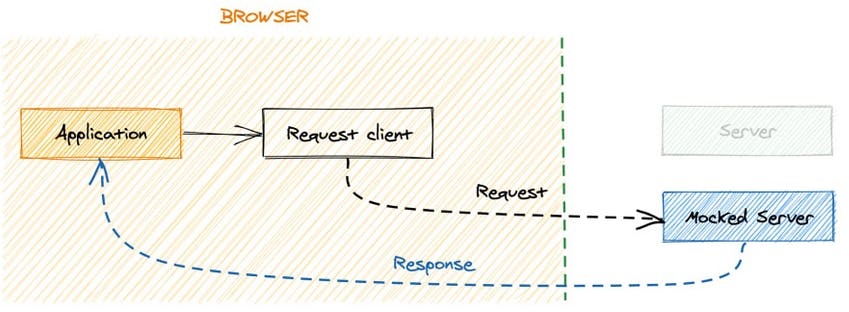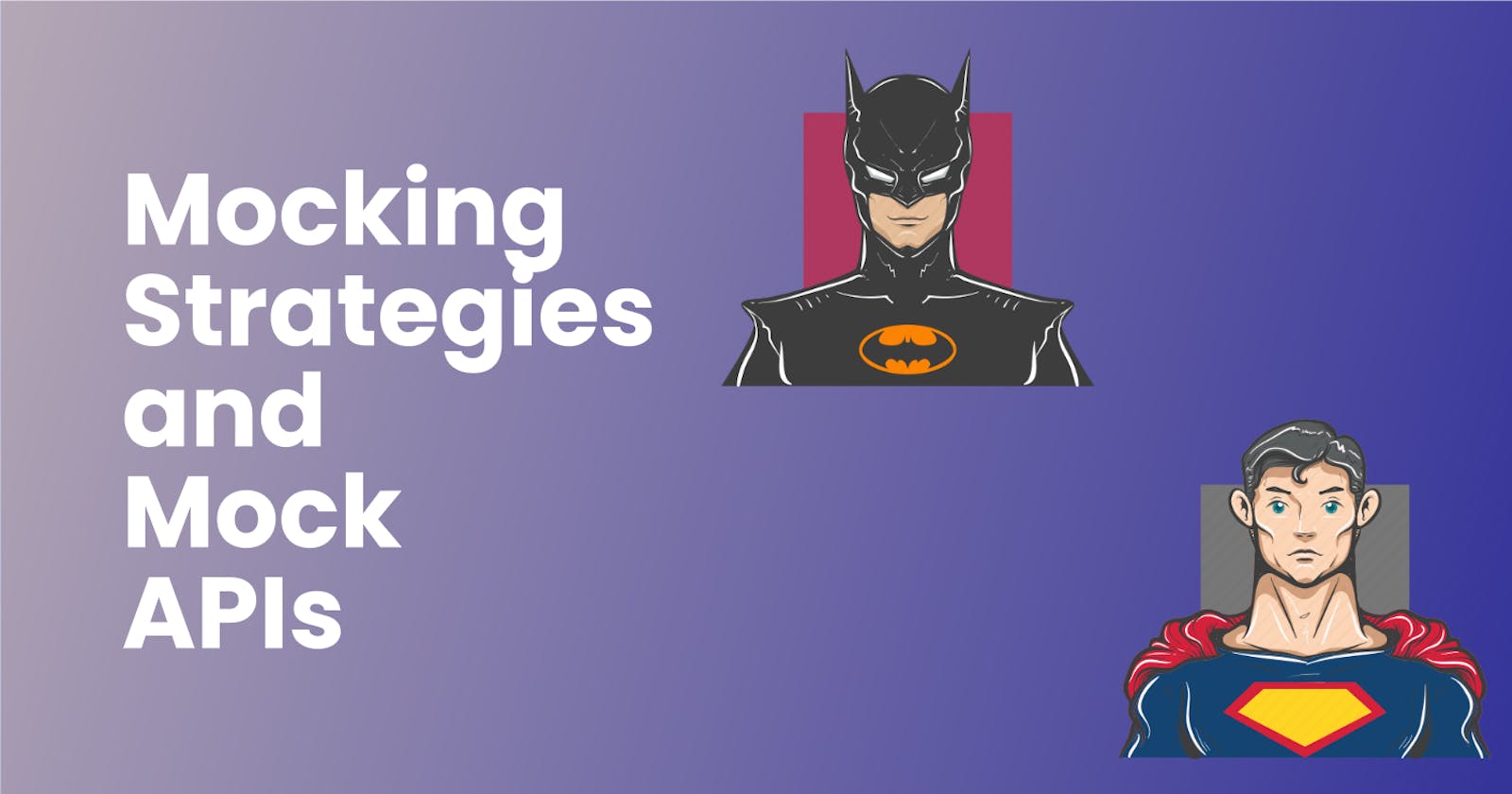Introduction
- Mocking and stubbing are terms/techniques closely related to testing.
- Let us look in detail at these two terms.
Mocking Strategies
There are mainly two mocking strategies:
1. Client-side mocking (or simply mocking)
- Generally, mocking is the action of substituting a piece of software with another, seemingly compatible piece.
- In other words, mocking means replacing one or more functions with a fake copy.
- It aims at replacing the outgoing dependencies of our tests.
- No request is actually made by the client to the server. Instead, the request is made to the client itself.
- It alters the actual code under test.
- Eg:
fetch(url) { return new Response('hello') } - The above piece of code will always return a mocked response whenever fetch is called.
- Libraries like MirageJS and Axios (interceptor) can help us achieve client-side mocking by providing a fake response.

2. Server-side mocking (Also called stubbing)
- Generally, stubbing means replacing some external service, or a network response, with a fake version.
- It aims at replacing incoming dependencies, like a network response.
- Here, a request is made by the client to the server.
- It doesn't alter the actual code under test.
- Eg:
fetch(url) { return response.json(); } - The above piece of code will always return a response from the server whenever fetch is called.
- Libraries like JSON-Server can help us achieve server-side mocking.

Mock API
What is a mock API (also called fake API)?
- A mock API is a mocked-up/fake API.
- It simulates/imitates the fetching of data from a fake server (from a specific route/endpoint) and returns the response.
- This process is called API mocking (also called mocking an API response) Eg: JSON-server, JSON-server-graphql, Mockoon
- Mock APIs are very useful in testing our code.
Why do we use mock APIs, especially during testing?
- Mock APIs are very convenient to make HTTP calls/requests.
- Real APIs could be a paid service. They are rate-limited (like only a few requests per day) and are very slow.
What is Mirage.js?
- Mirage.js is an API Mocking Library which helps us mock an API response.
- It helps us to create fake backend APIs easily.
- Mirage.js is a client-side mocking framework. This means that it mocks APIs only in the browser.
How does Mirage.js work?
- Mirage.js sets up a “fake” server to serve as if in production without actually setting up a real server and thus helps us to create fake backend APIs.
- When a request is sent by the client, Mirage JS intercepts it and provides a fake response.
- Eg: We can intercept the call to the endpoint /api/users/ with Mirage.js, and then return a fake response.
